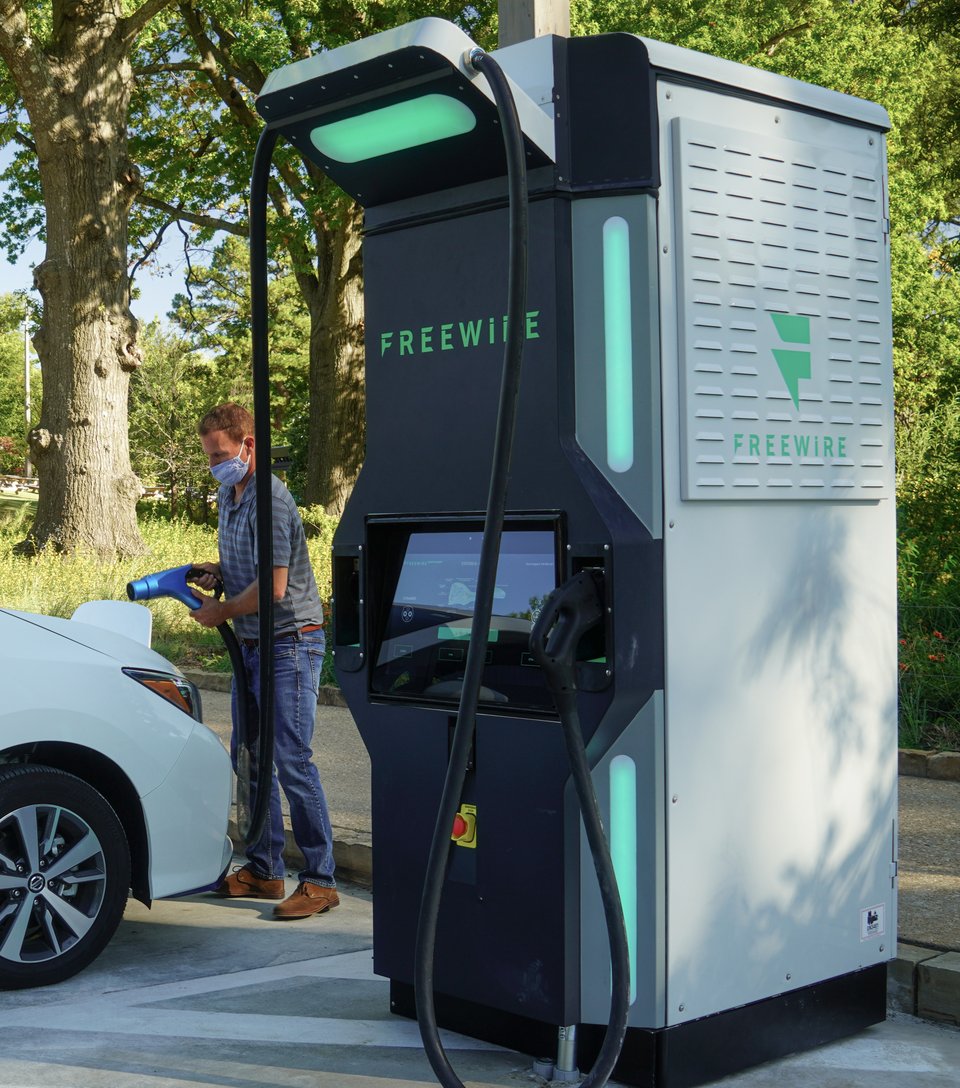3 Ways QSRs Will Benefit from Ultrafast EV Charging Stations
As QSRs know, the convenience factor plays an important role in consumer adoption. Just as with food, convenience will play a critical role in EV adoption and associated charging services. QSRs can leverage their expertise to address this next megatrend in mobility.
Demand for EVs is growing at an exponential rate. By 2030, the International Energy Agency projects there will be 130 million EVs on American roads, almost half as many total vehicles as are currently registered in the country. In addition to reducing America’s dependence on foreign oil, the switch to EVs will mitigate greenhouse gas emissions, a crucial part of the fight against climate change and extreme weather.
This revolution in transport is an essential investment in our future, but it won’t be simple, unless we rethink the status quo. The coming switch to EVs will require a massive transition of the energy we use to get around. While changes on this scale inevitably produce winners and losers, QSRs stand to reap substantial benefits. Widespread adoption of EVs and the next generation of ultrafast EV charging stations promise to generate revenue for QSRs and align their brands with energy efficiency and environmental stewardship.
Powering tens of millions of EVs will require chargers to become as accessible as gas stations are now. And to make EVs appealing on a mass scale, drivers must be able to power up in minutes, comparable to what they currently need to fill up their tank.
However, until recently ultrafast EV charging stations, which can provide 100 miles on 10 minutes of charge, typically demand expensive and time-consuming upgrades to the electrical grid. Plus, installing them can require the involvement of utility companies and local governments, adding layers of red tape and cost.
The next generation of battery-integrated charging stations provide a solution. Innovations in energy storage and boosting technology enable ultrafast EV charging stations to connect to existing power infrastructure. Instead of spending months and potentially hundreds of thousands of dollars on grid upgrades, ultrafast battery-integrated chargers can be installed and operational within hours.
The rollout of this new technology, which has begun in the U.S. and Europe, allows QSRs to provide a premium service to their customers while increasing store revenue. The business model for slow (Level 2) EV charging -- which can take four to six hours to fully charge a car -- has been established at offices and malls, but it doesn’t translate to QSRs where 30 minutes is a lingering visit. Battery-integrated ultrafast EV charging stations, such as the Boost Charger, developed by our company FreeWire Technologies, empower QSRs to offer this amenity.
The benefits for QSRs include:
New revenue streams and cost reduction
QSRs will be able to own and operate chargers on their property, adding an additional revenue stream at minimal cost. Site hosts have the option of offering free charging to increase traffic, or collect additional revenue on the charging service. When combined with energy storage technology, charging stations can also reduce your restaurant’s energy costs by mitigating demand charges, which is a major concern when installing ultrafast EV charging stations that pull power directly from the grid. Drivers no longer need to take that added trip to the gas station, and can now rely on restaurants to have a tasty meal and power their cars in one stop.
Customer acquisition and brand loyalty
EV charging creates another reason for customers to visit your restaurant. EV drivers are already used to searching for charging stations on their GPS. As QSRs add chargers, they’ll appear on the national charging network and map applications, directing drivers to your restaurant at no cost to you. What’s more, EV drivers make for desirable customers since they have twice the average national income.
QSRs will be able to brand their own charging stations, and encourage return visits with loyalty programs on both car charging and menu items. While drivers power up, screens on the chargers can tempt them with special food promotions available inside. In Sweden, dozens of McDonald’s restaurants have added charging stations. They perform double duty, drawing in new consumers and associating the brand with clean energy.
Meeting environmental sustainability goals
On top of the revenue benefits, offering ultrafast EV chargers can help with reaching corporate environmental goals and establishing your brand as a sustainability leader. For example, the city of Tulsa, Oklahoma has installed FreeWire’s Boost Chargers at Gathering Place park, and other popular attractions as part of its bid to promote itself as an innovation hub. The entire state, once synonymous with the fossil fuel industry, has emerged as a leader in EV charging.
In addition to the convenience of powering themselves and their car in one stop, EV drivers will come to associate a visit to your restaurant with reducing their carbon emissions. That way, a QSR visit becomes something everyone can feel good about.
With EV adoption and support services growing rapidly, now is the time for QSRs to implement EV charging, and establish their brands as responsible and proactive leaders in the charging market.
ABOUT THE AUTHOR
Arcady Sosinov is Founder and CEO of FreeWire Technologies. Prior to FreeWire, he spent almost a decade in finance and investment management. Arcady holds an MBA from UC Berkeley and an economics degree from Boston University.






